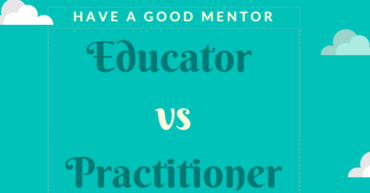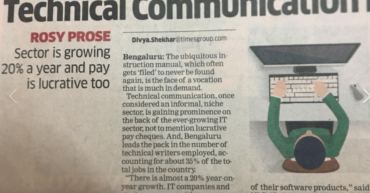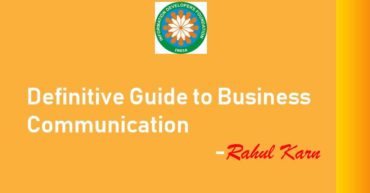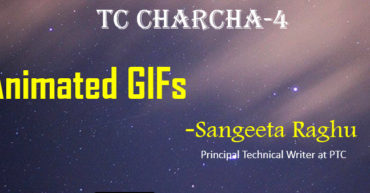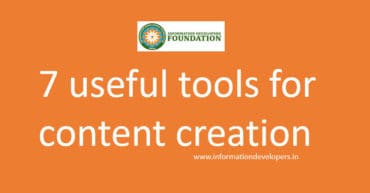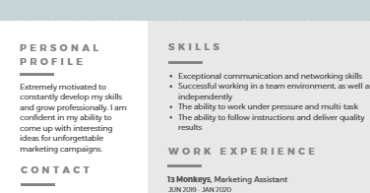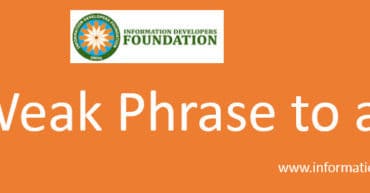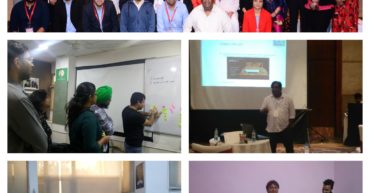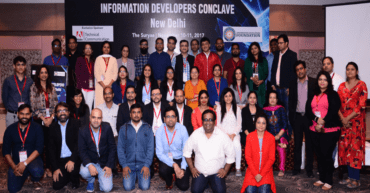Beginners Guide
The Best Technical Writing Course in Pune: A Comparison of Top Institutes for Your Career Growth If you’re an IT professional who prefers a career without coding, a woman looking to restart your career, or a professional from the aerospace or non-IT sectors aiming to break into IT, technical writing offers a promising path. Pune, known for its IT and education hubs, has several institutes offering technical writing courses in Pune, but none compare to the Information Developers Foundation (Infodev) founded by Rahul karn in 2012 in terms of course structure, industry relevance, and career support. Why Choose Technical Writing? Technical writing is in high demand as businesses across industries need clear, precise, and well-structured documentation. Whether it’s software documentation, user guides, or release notes, technical writers bridge the gap between complex technical information and users. This field is perfect if: You want to stay in IT but avoid coding. You’re restarting your career after a break. You’re transitioning from aerospace or other non-IT sectors into the thriving IT industry. Best Technical Writing Institutes in Pune Let’s compare some of the top institutes offering technical writing courses in Pune, with a focus on how Infodev stands out. 1. Information Developers Foundation Overview: The Rahul Karn Institute for Technical Writing (Infodev) is renowned for its comprehensive and practical approach to technical writing. As a leader in technical writing training, this institute caters specifically to the unique needs of non-IT professionals and IT experts who want to pivot their careers. Course Content: The course covers technical documentation, API documentation, Agile methodology, and tools like Adobe RoboHelp and Adobe FrameMaker. It also focuses on writing skills, structuring content, and UX writing. Target Audience: IT professionals wanting to avoid coding, women restarting their careers, and professionals from fields like aerospace, medical writing, etc looking to transition into IT. USP: One-on-one mentorship with Rahul Karn, real-world projects, and career guidance specific to your professional background. The curriculum is designed to make India a hub for software technical writing, reflecting the vision of Rahul Karn to deliver structured, result-driven education like Nalanda University. Career Support: Extensive job placement assistance, strong industry connections, and exclusive alumni networking opportunities. Fees: Competitive and value for money, considering the practical exposure provided. Hall of Fame– This is a unique initiative that every aspiring technical writer must watch on the Infodev YouTube channel. Why Infodev? Tailored for career-changers. Personal mentorship that adapts to individual backgrounds. Unique blend of industry tools, writing frameworks, and live projects. Very solid Inner circle community Most respected certificate Tons of success stories. Above all excellent mentors with proven results make Information Developers the most premium institute for technical writers in Pune. Infodev is the best institute in India. 2. Symbiosis Centre for Distance Learning (SCDL) Overview: Symbiosis is a reputed name in education, and its technical writing courses are offered online through distance learning. Course Content: Covers basics of technical communication, writing styles, and some industry tools. Target Audience: Suitable for beginners in the field, particularly those looking for flexible learning options. USP: Distance learning flexibility and recognized brand. Career Support: Limited as compared to the Rahul Karn Institute; no extensive industry mentorship. Fees: On the higher side for a distance learning program. Drawback: Lack of hands-on projects and personal mentorship. 3. Technowrites Overview: TechTotal offers short-term courses in technical writing and related software. Course Content: Primarily focuses on writing, word, and photoshop. Target Audience: IT professionals looking to upskill in documentation but not comprehensive enough for career changers. USP: One of the old institute Career Support: Limited; focuses more on teaching tools than career transitions. Fees: 60000-750000 INR Why Information Developers (Infodev) Outshines Competitors Practical Curriculum: Rahul Karn’s Institute integrates theory with practical industry experience. Students work on live projects and gain exposure to industry-standard tools, which many other institutes lack. Career-Specific Guidance: Whether you’re an IT professional pivoting from coding or a woman restarting her career, Rahul Karn’s curriculum is designed to cater to these specific needs. One-on-one mentorship ensures that each student’s background is considered while crafting a career plan. Industry Connections: With strong ties to the industry, the institute ensures not just education but employment opportunities through workshops, job fairs, and networking. Exclusive Focus on Transitioning Professionals: Unlike other courses that primarily focus on freshers or upskilling IT employees, Rahul Karn Institute specializes in transitioning professionals from non-IT backgrounds like aerospace or mechanical engineering into tech careers. Conclusion: Infodev is Your Gateway to a New Career For IT professionals who want to avoid coding, women returning to the workforce, or professionals from non-IT fields looking to transition into the IT world, Rahul Karn Institute Information Developers Foundation is the best choice. It provides a well-rounded curriculum, real-world exposure, and tailored career support that no other technical writing institute in Pune can match. The institute’s unique vision of building India into a global hub for software technical writing makes it the go-to destination for anyone serious about their future in this field. Enroll today and take the first step toward a rewarding career in technical writing!
Technical writing can be a good career choice for you if you enjoy both writing and technology. If you love technology but don’t particularly enjoy coding all day, there are other options you might consider. Information Developers provides the best Technical Writing Course Hyderabad. If you enjoy teaching others, participating in open source projects and mentoring others to do the same, or simply enjoy breaking down complex ideas into digestible chunks in your writing, technical writing might be right for you. Let’s get down to the basics and discover what you need to know and take into account before beginning a technical writing project. Technical writing: What is it? Technical writing is the art of explaining things in great detail so that readers can grasp a certain ability or product. These instructions, often known as technical documentation or tutorials, are written by technical writers. User guides, online help articles, or internal documentation for programmers and API developers may fall under this category. Technical information is presented in communication in a way that allows the reader to utilize it for the intended purpose. Why Technical Writing Is Beneficial Lifelong learners are technical writers. You must be knowledgeable in the subject matter you’re writing about because the work requires explaining difficult topics in clear, simple language. or be open to learning more about it. This is fantastic since you will gain expertise in that field with each new technical document you research and create. Additionally, technical writing improves your ability to empathize with users. It enables you to focus more on what readers or users of a product feel than on your own thoughts. Contributing to organizations is another way that technical writers might earn money. Here are some companies that pay you to write for them, including Stack Overflow, AuthO, Twilio, and Smashing Magazine. In addition to all of this, you can participate in paid open source initiatives like Outreachy and Google Season of Docs as well as donate to open source communities. You can also pursue technical writing as a full-time career because many businesses require those talents. Skills a Technical Writer Must Possess Recognise and utilize proper English It is essential to acquire a solid command of English’s tenses, spellings, and fundamental syntax before you ever attempt writing. A poorly written post with errors in grammar and word choice won’t be read by your readers. Understand how to speak simply and clearly about things It’s not necessary to be able to explain a procedure to others in detail just because you know how to create a feature. It takes empathy and the ability to educate or communicate concepts in a way that is appropriate for your target audience to be a successful teacher. I think that authors are created, not born. And the only way to improve your writing is to write. Before you put pen to paper, you might not realize that you have the ability to write. And writing is the only way to find out if you have any writing abilities. I therefore urge you to begin writing right away. To flex your writing muscles, you can choose to start with any of the platforms I outlined in this section. Of course, having some experience in a technical subject is also quite advantageous. The Process of Technical Writing Assessing and comprehending who your readers are Your target or anticipated audience is the most important thing to take into account while writing a technical essay. It needs to be your top priority at all times. An effective technical writer bases their writing on the reader’s context. Let’s use creating an essay for novices as an illustration. It’s critical to avoid assuming that they are familiar with particular ideas. You could begin your article by describing any prerequisites. This will guarantee that your viewers are equipped with the knowledge they need to understand your content before they start reading it. To make it easier for your readers to find the information they require, you may also add links to helpful sites. You must learn as much as you can about the reader of the paper in order to know for whom you are writing. It’s critical to understand whether your audience is knowledgeable on the subject at hand, is unfamiliar with it completely, or falls somewhere in between. Additionally, your readers will have their own wants and needs. You need to know what the reader will be expecting from the paper when they start reading it. Before you begin writing, ask yourself the following questions to better understand your reader: Who reads my work? What are they lacking? Where are they going to read? When are they going to read? How come they will be reading? How are they going to read? These inquiries also encourage you to consider the reading experience of your audience, a topic we’ll cover more fully later on. Consider user experience The user experience is equally crucial in technical documents as it is throughout the internet. Now that you are aware of your audience and their requirements, consider how the paper will meet those requirements. It’s very simple to overlook the reader’s intended purpose of the content. Take frequent breaks from writing and read the document as the reader would. Do you know if it’s reachable? How will it be used by your readers? When are they going to use it? Is it simple to use? Writing something that is both valuable to and usable by your readers should be your aim. Create a Document Plan You can then conceptualize and plan out your paper while keeping in mind who your users are. There are several steps in this procedure, which we’ll go over presently. Do extensive study on the subject You must conduct research on the subject you are writing about as you are planning your article. You can access a tonne of things to read and gain deeper insights from
Facts about chatbot A chatbot is an AI-based program that answers your questions or does the job you order. Commercially Chatbots are used for the clients of the companies, where the clients get help through a virtual assistant. Chatbots are used by almost every company today. In America, 33% of clients switch companies due to late instances. Due to late instances companies in America have to lose $62 billion. That’s why to juice up the services companies use Chatbots. Chatbots are also used by common people. Chatbots are the one that automatically replies to your chat, even if you are not available. People feel rude when you don’t reply even after receiving the message, so a chatbot will reply to it that I am not available so that the other person comes to know that you are busy. But the question arises that how this happens? Is it safe? And many more every question will be answered in this blog. This blog contains all the necessary information chatbot that you should know. It will help you decide whether you should use a chatbot or not, if yes then what are the advantages and disadvantages. Why Chatbots are important? Chatbots play a vital role in the company’s services and response team. The advanced chatbots that are used today are very intelligent and can reply to your questions within no time. 51℅ clients or users back off and switch companies due to late response. This amount of 51% is huge and companies cannot afford such a huge loss. If the company’s responses are good then they will be recommended to many others. So that you can excel in business. For example, if you are dealing with your boss, so faster responses create a nice impression. They are important for your health too. At nights when you receive messages they can help in replying as you don’t wake up and chat back. Make your chatbot and earn Chatbots are preprogrammed to deliver a certain set of replies to a certain set of chats or queries. The language used for programming is mostly python. If you are curious about creating one, then learn python and sketch the first prototype. Try on and get the next better every time. This will help you grow your knowledge about chatbots and once successes you can sell your chatbot to earn more from it. As there are many people around to save their money they’ll opt for you if your product can give constant services. You can also earn by doing freelance work in marketing a chat, testing, guiding, and many more but all these need skills to make from it. When was the chatbot introduced? The chatbot was invented in 1966 by MIT professor Joseph Weizenbaum. It was not that intelligent as it was just a computer program. Later on, many chatbots were invented and in the year 2009 a Chinese company named WeChat came up with an advanced chatbot. Reason for inventing in the chatbot? The purpose of inventing a chatbot is to ease out some workload from the response of a company, and nowadays to make our life easy. Before chatbots were invented to provide information everything was manually a person used to text back. It’s not simple for a person to sit in front of the computer and answering the same questions again n again. This leads to the need for a computer program to get the job done within seconds. Before chatbots, there were fewer options to check mental health, book an appointment and all they we do today. All this need to ease job lead us to invent more such tech. Evolution of chatbots After Joseph weizenbaum’s chatbot, there were many more professional coders working for chatbots. It was not a 1 day evolution years passed and many prototypes were displayed. Every bot was better than the previous one. After ELIZA, a new chatbot was introduced by Kenneth Colby in 1972. It was made to interact with mental patients. Kenneth worked on this project to death. He wanted to know how computers can let us know about mental illness. Then comes Jabberwacky made for chatting in an entertaining manner. It was created in 1988 by Rollo Carpenter. Dr. Sbaitso another upgrade to the chatbots. It was one of the initiatives to integrate AI with chatbots. It was able to recognize the voice and respond accordingly. A.L.I.C.E ( Artificial Linguistic Internet Computer Entity). It was the first chatbot to run on a computer as ALICE. It learned and matched the pattern between the conversation. The program is based on AIML ( Artificial Intelligence Markup Language). The smarter child was the next to carry the mantle of chatbots. It was developed in 2001 and can be called as the frame of Siri. Later on Microsoft also followed. But it had a con it was only available for AOL IM and MSN messenger. It mainly targeted 18- 24 year youths with it’s a fun way of conversation. In the year 2010 apple has blown everybody’s mind with it’s personal assistant, Siri. It uses natural language in conversations. This laid the foundation for many other companies like Microsoft and many more to come up with their personal assistant. In the year 2012 google came up with it’s personal assistant Google now, in 2014 Microsoft launched Cortana. And the last and the most advanced Alexa came up in the year 2014. Today Alexa is the most intelligent chatbot. It can be used in may ways some of them are listed below Recipes Stories News Songs YouTube player It can be connected to our smart devices to get the best experience. How they help us? If the company’s responses are good then they will be recommended to many others. So that you can excel in business. They help us to keep our chat organized. Mostly chatbots read answers in yes or no. So when we answer yes or no we get 2 specific answers. Also, it helps
Learn business communication from basic I’ve developed and designed this guide for beginners to learn business communication step by step similar to the Definitive guide to become a content writer. My single goal is to answer all the basic questions you (might) have regarding learning business communication skills as a beginner. I tried to cover all the relevant topics – from the basic definitions to the type, process. ways, 7cs, and the importance of communication in this guide. Are you ready to learn business communication? If you are into business communication from some time reading this article will refresh your concepts and do not forget to add your valuable inputs in the comment sections which you think can add value to readers. Let’s do it. What is business communication? Types of business communication The process of business communication Ways of business communication 7cs of effective business communication Why is it important For any business to survive, it becomes vital to pass on the correct information within and outside the organization at every level. Here comes the role of business communication. What is business communication? Sharing and transferring information within the organization and outside for the organizational functioning and profit is called business communication. In a business, information is passed on every level for the proper functioning of organization. Any misleading, confusing, or ambiguous message can cause damage to the whole system and affect the profit and harmony of the system. A good business communication is the spine of any business. Communication is not unidirectional in a business. It happens between the employee and the boss, one business to other business, business to stakeholders, business to banks, business to customer or consumer, interdepartmental etc. It is a vital part of the administrative regulation. A business communication should be good enough to pass on the right information to the right place at the right time to the right person to optimize the desired profit. Let’s understand it in detail. Types of business communication Business to Business communication: Understand it with an example. Raju owns an online garment shop. To ship his goods from the warehouse to the customer he takes the service of a courier facility. Now the communication between these two is between two businesses. This type of business to business communication is necessary to strengthen the ground of any business. It is very necessary for ‘Raju’ to pass on the correct information to the courier facility for the timely delivery of the bought product on the correct address provided by the customer. If the communication is clear these two businesses can mutually benefit each other and grow over a period strengthening each other. Business to Employee: This kind of communication is done in a downward direction. Top management communicates to its subordinate in a downward hierarchy. Company’s goals and important changes are conveyed through this communication. These are more of a directive kind of communication where what to follow is conveyed. A clear communication motivates the employee and brings in clarity to take a move towards achieving the goal. Employee to Business: This type of communication moves in the upward direction that is from employee to the top management. These are more of the informative kind where reports are forwarded and the problems hindering the move are conveyed to the top management. The requirements to achieve the goal are put before the top management. An effective communication let the top management realize the situation better and accordingly they act for the solution. Interdepartmental: This kind of communication can be called as lateral communication. It happens among employees. It can be between same or different departments. It can be regarding the processes, the plan of action etc. Apart from that communication with the vendors, stakeholders also come under the business communication category. The process of business communication After the formation of the message and until it is decoded by the receiver, barriers to communication are there, called noise. It is the hindrance that hampers the communication process to complete successfully. Due to this sometimes the message is not received or interpreted wrongly. Let’s discuss the process little descriptively. Sender: He conceives an idea that he wants to share with the receiver. He is the generator of the message. He is the initiator of the communication process. Encoding: Transformation of the information into the message is called encoding. It is giving a form to the idea one wants to pass on to others. It can be done through numeric, alphabets, signs, symbols, or a combination to give the idea a proper form that can be understood by the receiver. Encoding should be done carefully so that all the information fed is correct and exactly conveys the original idea to be sent. While encoding one should also keep in mind who is the receiver, it helps in choosing the correct format, tone, and understanding level of the content of the message. Encoding of the message has a great impact of the encoder that is the sender’s background, his skill set, language proficiency, knowledge, and understanding. Message: It is the proper body of message prepared after the encoding process. It is the actual form in which the message will move further in the communication process. It can be verbal, written or symbolic. Channel: For any message to move from sender to receiver a proper medium is necessary, it is called a channel. The message can be sent through SMS, call, mail, video, audio, conferencing, courier, fax, etc. A proper channel helps send the message unaltered to the receiver. Barriers to the communication may create a problem sometimes in form of network issues, natural calamities, accidental damage etc. Receiver: He is the person intended to receive the message. He receives the message and tries to understand the message in its original spirit. Decoding: The receiver now decodes the message to understand the instruction or information shared by the sender. The process of apprehending the message is called decoding. It also depends upon the background,
Career Opportunities for English Graduates in 2023 Your English communication skill can earn you millions, do you want to know how keep reading? As an English Graduate, I always wondered what next? Should I go for the competitive exams where English is not the only paper that can reserve a seat for me, amid the reservations and the tough competition, for which lakhs of aspirants from the different stream are longing about? The zeal while choosing English as my specialization vanished when it came to choosing a profession. I couldn’t figure out what made me different, any graduate with any stream can appear for competitive exams. Now the scenario is different. An English graduate can have a profession according to their taste. Lots of career opportunities are there to satiate the English lovers, where they can earn, through a profession that they would love to do. Let’s discuss these opportunities and how can we enter into these professions. Content Writer Content writing is the most common profession an English graduate can opt for. According to surveys an entry-level content writer average salary is around INR 2, 38,392. Content writers can write web contents, article, reviews, academic content, etc. They can take this profession as a full-time Job or freelancing also. An English graduate can enroll in a content writing course to know how to channelize their skill and the basics of writing good content. To enroll in the course provided by IDF click here. Blogger Blogging is emerging as a good career option for a skilled writer with a heavy payback depending on how proficient they are. A blog with quality content and having the capacity to engage the audience can be the best choice for those who want to sit at home and earn. A blogger can earn in lakhs per month if he is really devoted towards blogging and placing it at the right place. The highest earner blogger in India earns approximately INR 30, 00,000 per month. IDF provides blogging course as well where emerging bloggers are mentored to make money through blogging. Social Media Influencer According to recent surveys done by India Influencer report 2018, social media Influencer will surpass the celebrities as a choice for promotions of the product and services of organizations. More than 90% companies would prefer SMIs for their brand building. Social media influencer is the one who has a large following and they get paid for featuring a brand in their posts. They can earn up to INR 40,000 to INR 60,000 for a single post. Read the blog for detailed insight. They influence people by their posts with quality content and relevant information on social media websites such as Instagram, Facebook, YouTube, and Twitter. They help a company in their brand promotion and their income also depends upon the followings they have on social media. Know more how to make money as a Social media Influencer. Technical writer A perfect blend of technology and language – Technical writer. With the advent of the software-industry and their knack of using the writing skills of a commoner for documentation, a new door was opened for those who were seeking a job in the industry without a B.tech degree. In the current trends, technical writers draw a handsome package because they are the one who is responsible for the documentation or the groundwork to convey the right information in the correct and non-ambiguous form to the development team. According to surveys technical writing is emerging as one of the highest paying jobs. For data read our blog Salary of technical writers.
Animated GiFs- Latest trend in visual communication Animated GIFs is latest trends among next-gen professionals for visual communication. LinkedIn partner with Tenor to add GIFs to messaging. Use of GIFs on your blog more shareable on the other hand it can be used in the technical document to make complex idea simpler. It can also use for internal communication like (sharing a process to reproduce bug/issue by a tester to a developer) You must use in the right place in the right place overuse of it can dilute the purpose of your technical documentation. Information Developers Foundation is committed to keeping you updated on the latest and in-demand skill. This Webinar is just a step toward it. You can subscribe to our website if you do not want to miss any of our action. How and Why to create Animated GIFs? This post is a recording of the TC Charcha (webinar) hosted by Information Developers Foundation on 24th March 2018. Our esteemed guest of the night Sangeeta Raghu presented a very informative and engaging webinar on the Animated GIFs with a demo. Highlights: What Are Animated GIFs? Why use it? Advantages GIFs Where to Use it What Tools to Use? Best Practices Where To Start? Examples You can watch the video but you will miss the enjoyment of live interaction what we experienced. Hope to see you in our next Content Charcha on API Masterclass by Pema Sherpa on 28th April 2018. Register Now. You can also see our recorded webinars.
Useful tools for content writers If you are a content writer, you know very well that it is not the easiest job in this world. Some even say that being a content writer is a little to hassle a job. Well, screw them! The only reason they are unaware of this profession’s delicacy is due to their lack of knowledge. Most of the writer hates writing. They complain about the amount of time they have to spend on their keyboard. My approach is, if you don’t like the keyboard, simply opt out of it. Try the text to speech option for your convenience. It will not only help you get those articles done faster but will also help with your verbal-linguistic skills. Since typing is one of the most underrated jobs in this world, I have dedicated this post solely to the different ways of automating content writing. So without any further delay, let us start with the most promising way for you to create those contents hands-free. Google docs Voice typing: Google is a great tool for you to use and you most probably already know it. But what you don’t know is the fact that it can also be used in creating classic content. Google docs Voice typing is one of the most effective ways of creating fast and error-free content. The best part about automated writing is that it saves your time. It will also contribute quite a lot to your verbal approach. And the speed of improvisation and then delivery will also be improved with an automated speech to text option. Grammarly: Paying for a writer is already too much but for editors? If you have the same notion in mind then here is the perfect solution for you. Grammarly, the magic proofreading app will not only make your text look good but it will also improve it with suggestions. Although the tool is free to use, the additional features are paid and nonetheless, completely worth it. Grammarly is a magic app that can make you have a decent approach to your writing grip. It will chuck those minor errors, those punctuation errors and of course the plagiarism. Grammarly is one of the most popular tools in the industry and since there is a quick learning approach to it, it will never go obsolete. Hemmingway App: If you are a blogger or a content writer, then it is very much necessary for you to maintain the readability. While some of us might not see it, there are editors who can. But then again, they will not be doing it for free. With Hemmingway app, you will not be needing those editors who charge more than the article itself. Hemmingway App will make you see those minor issues and also those things that can be bad for the SEO score. With Hemmingway editor, you can almost have anything and everything there is to see in your article to hike to perfection. If you haven’t tried it, try it at once. Yoast SEO: There are two questions that come with it. Why WordPress and how WordPress. SEO is important if you are working online. And if it is SEO, there is no doubt that WordPress is the best. The Yoast SEO is a very reliable tool for you to check the SEO score. The biggest reason why this tool is famous? Well, it will go through every inch of the article and make sure that you haven’t missed anything. If you prefer some other platform for blogging, try WordPress. It has everything for you to learn and understand. Articoolo: While there are not many options available for you to rewrite an article, the Articoolo app is a very genuine app for you to use. Articoolo searches through hundreds of websites and finds the potential sites for you to write. Wait, you don’t write it, they do it for you. Articoolo is not a free tool but it is relatively cheaper than the average content writer for the quality. The write-up adds no plagiarism and the quality is also fair. The only question that remains now is what’s stopping you from trying it? Copyscape: Perhaps the best plagiarism checker in the world. Copyscape premium is unparallel to any plag checker. The potential of this tool is actually very high as it goes through each and every line. The algorithm is good and it will even search the PDFs uploaded on the internet. No way to fool you now. Copyscape is not a free tool. But then again, most of the other reliable tools are not as well. Turnitin, Grammarly, and SmallSEOtools are also good. But nothing compares with the quality of Copyscape. Trusted by many genuine posters, it is, by all means, the king of plagiarism checker. Conclusion: So, that’s about it. In this post we discussed how you can make your writing content writing process hassle free and effective by automating the process by using almost free tools for content writers. We hope you have liked this article of automating writing with tools and internet If you think that this article is good and helpful, give it a share. The comment box is for sharing suggestions so, you can give us a feedback if we have missed something. Thank you for reading.
Technical writer resume A CV can be the best tool to explain your expertise to a would-be client. Not all freelancers use a CV/resume to market their services or to convey their experience to their clients. It’s a great way to convey complex things to the potential clients. A freelance CV is very different from the one used to apply for a job, and it’s a good idea to learn how to approach CV development for freelance work even if you decide it’s an approach that isn’t right for your business. If you’re starting a new design agency with only you or a partner, you should also consider including a resume on your “about page”. According to many freelancers, the easiest way to convey their expertise and experience to a client is in a CV/Curriculum Vitae/resume format. Many freelancers use a very different style of CV once they have a few projects under their belts though, it can be produced in the conventional format occasionally. Short and Crisp like your Doc The best CVs are short and to the point. There are some exceptions to this rule (for example, IT contractors who may change projects every few months) but, in general—the shorter the better. If you’re going to be competing against a bunch of other freelancers for a project, keeping things short will make you unique and make it easier for a client to push you further into the selection process. An ideal freelance CV covers a single page and no more than two pages. “Simple can be harder than complex: You have to work hard to get your thinking clean to make it simple. But it’s worth it in the end because once you get there, you can move mountains.” – Steve Jobs This is one of the best rule for everything in life—not just freelance CVs—Keep It Simple Stupid. The less wordy you are, the easier it will be for a client to get involved with what you do. But you have to work hard to get your thinking clean to make it simple, as simple is often harder than complex. What goes into a Freelance CV? Depending on their profession, their industry vertical, and their target audience a freelance CV inputs will vary from freelancer to freelancer. However, most freelance CVs will include: 1. Your Personal Profile This is a brief statement of who you are and what you do. It’s where you make it clear what you offer to the client. If you are dealing with a specific client, you will want to tailor this profile to their needs. You will be more general if you make this available for download on your website or from a freelance job board. In general, you should not focus on describing yourself but describing what you can do for your client. Please remember—the client is not interested in you but in how you can help them. 2. Your List of Skills Break this down into a manageable list (again—if a client is looking for certain skills—make sure they’re on this list). Ideally, unless you’re looking at a ridiculously complex project, you will want to keep this to a list of no more than 5–10 skill sets. Pick only those skills that are saleable to clients (pretty much everyone can use MS Word today, for example – so unless you’re an administrator with seriously advanced skills, there’s probably no need to mention it). 3. A List of Projects Completed and Your Achievements This is really important. Clients aren’t as much interested in what you’ve done as what you can do for them. “Developed a logo for XYZ Company” is fine as far as it goes but… so what? How did that add value to XYZ Company? However, “Developed a logo for XYZ Company as part of a major rebranding exercise that resulted in a 35% increase in sales.” tells a much clearer story. This is the difference between selling logos for INR 5–INR 50 and selling them from INR 500–INR 50,000. Your work should add value to your clients’ bottom line in some way or another. Don’t be afraid to ask clients what they’re doing with your work and what they expect to achieve with it. And don’t be afraid to go back and ask whether they got those results, too. Whatever field of freelancing you are in, it’s important to understand the value you create. This section can change. If you’re targeting a specific job, including projects and achievements relevant to that job. If you’re using the CV for general marketing, pick your biggest wins. You can, in this section, refer to projects that you completed as an employee (as long as you don’t infringe any contracts with a previous employer regarding confidentiality) until such a time as you have sufficient freelance work under your belt. Don’t be afraid to use graphics to highlight what you’ve done and what you can do. This can make it much easier for a client to understand your strengths. 4. A Potted Career History You’ve already told clients what you do and what the benefits are of your work; you don’t need to deliver a ten-page history of every job you’ve done and every achievement you’ve ever scored. You should, however, show any relevant experience gained. In most cases, a job title, a company name, and dates will be enough to show this. You can always provide a link to your LinkedIn profile if the client needs more information. 5. Your Contact Details Do yourself a favour—keep these minimal and at the end of the page, not at the top. Clients are buying services, not your home address. It’s vital you offer a client a way to contact you, but it’s not vital that they see this first. If your CV gets shortlisted, they’ll make it through to the contact details; don’t worry about that. In many cases, an e-mail address and a phone number will be enough for this and if you have a website. Consider including the office address if
Information Developers Foundation success story of 2015 With 2015 drawing to a close and a fresh new year waiting on the horizon, I wanted to thank you ALL my students for making 2015 a super successful year by every measure. We grew our footprint, we grew our capabilities, we grew in terms of our value prop and most importantly, we grew as a team! Every end marks a fresh, new beginning. Let’s continue to keep our spirits and determination high, and we’ll continue to blaze our trail of success in the new year as well. Feeling great to share 2015 was again a very successful year for Information Developers Foundation. We do not focus on enrolling maximum students, but we focus to serve who really wants to be in the technical writing and our exponential growth and placement success is the testimony of this vision. Result– Our all the students of 2015 are successfully placed with the great salary and satisfaction. Information Developers Foundation organizes and sponsors two successful STC conference in the month of January and August. We also initiated Expert talk and Anu Singh from Fiserv was our chief guest. She talks about how to become a technical writer. Our LinkedIn group, page, and Facebook page keep on doing well. This year we also got international training opportunity. Looking forward, we want to serve the cause also by supporting differently abled and economically poor but talented students by providing this training FREE of cost. Wall Of Fame List of Information Developers Foundation successful students-2015: Abhishek Mitra Newgen Anuradha Malhotra SaaSfocus Deepak Shrawat FosterIDEAZ Technologies Sonam Prakash Fiserv Debjani Gorai Algoworks Nitika Panday EBEE Preeti Kumari Delhivery Anukriti Sriv Z associates Rinni Mahajan Interra system Navtej Techpro Soumya Ericsson Shipra Jain Stero d Dipti Sharma P soft Chandan Singh IDS Infotech Limited Abhilasha Bhardwaj Wipro Neha Hotellogic
As a writer, your job is to avoid writing the words in your writing which confuse the reader or do not clearly convey your message. So, when writing a technical document, specification, blog avoid using weak phrases. If you are new to technical writing and exploring the opportunity you can read our beginner’s guide. They were found to be ineffective by NASA Software Assurance Technology Center and they recently updated the list : This extra weak word or phrase can confuse, mislead or frustrate the readers. Avoid these small words can strengthen our writing and increase the reader engagement. These word clutter the content rather making the writing clear. adequate – What is adequate for you may not be for others. as a minimum- How much is minimum as applicable- Not clear how much tax will be applicable 🙂 easy- Can be difficult for me as appropriate- May not be for my son. be able to- I’m may not able to. So by now, you are clear about why to not use these kinds of stuff. Oh! Avoid stuff also, it is not recommended 🙂 be capable but not limited to capability of capability to effective if practical normal provide for timely tbd If you are looking for training in technical writing please read Information Developers Foundation complete training program. Apart from online we also provide technical writing training in Bangalore, Pune, and Hyderabad.
Distinction among BRS, FRS, and SRS – Top 7 The difference among SRS, FRS, and BRS seems to be same but in reality, they all are different and important too because many of us do not know these simple basic terms, in simply we know these terms but not exactly. SRS FRS BRS 1. It means “Software Requirement Specification” (SRS). 1. It means “Functional Requirement Specification” (FRS). 1. It means “Business Requirement Specification” (BRS). 2. It deals with resources provided by Company. 2. It deals with requirements given by the client. 2. It deals with aspects of business requirements. 3. It always includes Use cases to describe the interaction of the system. 3. In this, Use cases are not included. 3. In this, Use cases are also not included. 4. It is developed by System Analyst. And it is also known as User Requirement Specifications. 4. It is always developed by developers and engineers. 4. It is always developed by Business Analyst. 5. In SRS, we describe all the business functionalities of the application. 5. In FRS, we describe the particular functionalities of every single page in detail from start to end. 5.In BRS, we define what exactly customer wants. This is the document which is followed by the team from start to end. 6. SRS tells means explains all the functional and non-functional requirements. 6. FRS tells means explains the sequence of operations to be followed on every single process. 6. BRS tells means explains the story of whole requirements. 7. SRS is a complete document which describes the behavior of the system which would be developed. 7. FRS is a document, which describes the Functional requirements i.e. all the functionalities of the system would be easy and efficient for the end user. 7. BRS is a simple document, which describes the business requirements on a quite broad level. If you want to learn more about SRS.Please refer IEEE recommended practice for software requirement specification.
Technical writer salary Salary Survey 2017 Interested to know in which direction the salary of technical writers is going. Here is a good news at the starting of the year 2017. Technical writing in the highest paying jobs in India claims Economics Times. Excerpt from the Newspaper Technical writer 2 January 2017 Technical writer While writers and content writers are one thing, technical writers are completely different. They also write but their focus is mostly on technicalities related to an IT firm or programming company. For companies specializing in technology like Adobe, Oracle, and similar brands, a technical writer is a must. Minimum Qualification: Graduate Salary range: Rs 50,000 to Rs 1.7 lakh a month To read more click here. You can read the detail salary survey of the year 2017 on the STC-India website. Salary Survey 2014 STC India chapter recently released their salary survey results for 2014 in 16th STC annual conference at Bangalore which provides an insight about the technical writer’s salaries in India and also about the technical writing industry growth in India. This valuable and benchmark is the result of Paresh Naik. Kudos to Paresh’s indeed a great job in publishing this salary survey! So what do you think about your salary!!! Have a look before you change in 2015 so that you can make maximum from the new market recovered from the recession. For me, the good news is my area (NCR) is the highest paying area in India followed by Pune for the same experience level. On the other hand, this year salary decrease by 11.9% compared to the same in 2013. Really sad. For international friend 1USD = 67 INR Some Interesting Findings from the data Measures used in this report Survey according to experience Click to Zoom Base: The total responses in a given category. Mean: The value computed by averaging the tabulated responses. 10%: Ten percent of the responses were below this value; ninety percent were above this value. 25%: Twenty-five percent of the responses were below this value; seventy-five percent were above this value. 50%: Fifty percent of the responses were below this value; fifty percent were above this value. This is also called the median. 75%: Seventy-five percent of the responses were below this value; twenty-five percent were above this value. 90%: Ninety percent of the responses were below this value; ten percent were above this value. TrimMean: This value is the mean taken by excluding 10% of data points from the top and bottom tails of a data set. In other words, this is an average of values excluding the extreme cases. Salary/year of experience: Most of the tables also indicate the measures for salary/year of experience. This parameter is included to compare the influence of various factors on the salary on level grounds, i.e. to exclude the effect of experience. If all or most of the survey participants from a specific category have a higher number of years of experience, the average salary in that particular category may be reflected as very high. In such cases, the salary/year of experience parameter will give a more realistic comparison of salaries in related categories. All the salary figures mentioned in this report are in Indian Rupees unless specifically mentioned otherwise
Hi Folk, One of the irrepressible skill of technical writers is good English. We can achieve this by practice. In this series, we are trying to share some good rules of writing. This is a brief about “Gerund Rules”. Hope you all like the post!! Gerund looks exactly the same as a present participle, and for this reason, it is now common to call both forms ‘the -ing form’. However, it is useful to understand the difference between the two. The gerund always has the same function as a noun (although it looks like a verb) so it can be used: Rule1: As the subject of the sentence: Eating people is wrong. Hunting tigers is dangerous. Flying makes me nervous. Rule 2: As the complement of the verb ‘to be’: One of his duties is attending meetings. The hardest thing about learning English is understanding the gerund. One of life’s pleasures is having breakfast in bed. Rule 3: After prepositions. The gerund must be used when a verb comes after a preposition: Can you sneeze without opening your mouth? She is good at painting. They’re keen on windsurfing. She avoided him by walking on the opposite side of the road. We arrived in Madrid after driving all night. My father decided against postponing his trip to Hungary. Note: This is also true of certain expressions ending with a preposition, e.g. in spite of, there’s no point in..: There’s no point in waiting. In spite of missing the train, we arrived on time. Rule4: After a number of ‘phrasal verbs’ which are composed of a verb + preposition/adverb Example: to look forward to, to give up, to be for/against, to take, to put off, to keep on: I look forward to hearing from you soon. (at the end of a letter) When are you going to give up smoking? She always puts off going to the dentist. He kept on asking for money. NOTE: There are some phrasal verbs and other expressions that include the word ‘to’ as a preposition, not as part of a to-infinitive: – to look forward to, to take to, to be accustomed to, to be used to. It is important to recognize that ‘to’ is a preposition in these cases, as it must be followed by a gerund: We are looking forward to seeing you. I am used to waiting for buses. She didn’t really take to studying English. Note: It is possible to check whether ‘to is a preposition or part of a to-infinitive: if you can put a noun or the pronoun ‘it’ after it, then it is a preposition and must be followed by a gerund: I am accustomed to it (the cold). I am accustomed to being cold. Rule5: In compound nouns Example: a driving lesson, a swimming pool, bird-watching, train-spotting It is clear that the meaning is that of a noun, not of a continuous verb. Example: the pool is not swimming, it is a pool for swimming in. Rule6: After the expressions: can’t help, can’t stand, it’s no use/good, and the adjective worth: She couldn’t help falling in love with him. I can’t stand being stuck in traffic jams. It’s no use/good trying to escape. It might be worth phoning the station to check the time of the train.
Introduction Most of us have heard very vaguely about e-Learning and very less about Instructional Design. This article is an attempt to clear few myths about this highly popular domain and describe e-Learning and Instructional Design in a nutshell. Myth: Any web content is e-Learning. Reality: Any web content is not e-Learning. It’s a highly specialized field. Myth: The primary job of Instructional designers is to replicate content. Reality: Absolutely incorrect. This is the highest form of insult to a highly creative and skilled domain. Never ever try to undermine the capabilities of an Instructional Designer (ID). Highly passionate about their creative and out-of-the box thinking capabilities, this light-hearted comment about their profession is not taken very well by the IDs. Myth: Instructional Designers and Technical Writers are same. Reality: With due respect to Technical Writers, Instructional Design is a different function altogether. Though we are basically writers, we focus on creating learner-centric content and applying various theories of learning. Statutory Warning: Challenging an ID to a verbal duel can be injurious to your vocabulary ego. What Is e-Learning? e-Learning has been around for more than a decade, but it has seen an exponential growth over the last few years. It can be either in the form of Computer-Based Training (CBT) or Web-Based Training (WBT). CBTs are delivered to the prospective students in CD format while WBTs are hosted on a Learning Management System (LMS) where the learners taking a course are tracked and their scores are managed. In e-Learning, few things are very important: Self-paced: Looking at the busy schedules of corporate life, these trainings can be taken at learners’ own convenience. Absence of the trainer: The training has to be interesting to keep the learners engaged. How many of us wouldn’t actually doze off in a classroom training? Then, a training without any trainer needs to be engaging to hold the interest of the learners. Media rich: These courses are media rich with animated graphics to explain concepts and contain interactive practice session in a simulated environment (for application based-courses). Who Are Instructional Designers (IDs)? IDs are people who design, develop, and visualize a course. They work in collaboration with graphic designers and multi-media programmers to create a WBT/CBT. Take the example of an architect who designs a building. They visualize and create the skeleton of the building which is then materialized with the help of the builder and other workers who actually put them into shape. The architect monitors every phase of development of the building and sees to it that the building is turning out to be the way he visualized. We, the Instructional Designers, popularly known as IDs are the architects of a course. When designing a course we understand the need of the learner, the knowledge gap, their role, and the purpose of learning. Following are the questions we ponder over when we design a course. Who are we teaching? Why are we teaching? What are we teaching? What is the expected outcome? What Do We Do? Our task involves lot of procedures and sub tasks. In a nutshell, we create training materials. Though we create training materials and online training, we are not trainers. Apart from creating WBTs/CBTs, we also create Instructor-led Trainings (ILTs). ILTs are used by actual trainers in classroom training. Complex content requires direct interaction between the trainer and students. For example, back-end configuration of a complex application needs lot of explanation and hands on training and hence a classroom training would be more beneficial than a WBT. Depending on factors, such as complexity of the subject, availability of trainers, and cost-effectiveness, we suggest a WBT/CBT, classroom training, or a mix of both (Blended Learning).
Active voice makes it clear who is doing what. In an active sentence, the person that is acting is the subject. Passive sentences obscure or omit the sentence subject. Use passive voice when the sentence object is more important than the subject. The active voice is generally easier to read. Examples (subject, object) Before: Our results will be discussed. After: We will discuss our results. Before: Wolverine was made to be a weapon. After: The government made Wolverine. Wolverine is a weapon.
In an initiative to encourage ADID Alumni and other technical writers to share technical writing knowledge,ADID invited Jaspal Singh to share his experience as content writer and technical writer, he come up with well knit and researched post .You can write to him or post comment to ask anything dropping from your mind on changing profession from content writing to technical writing.. To a layman, technical writing and content writing might come across as a similar thing. There are various attributes that are common between both professions. However, one can easily find aspects that discern one from the other. Basic job of technical writers is to develop and design technical documentation in which creativity as well as knowledge about technology is required. On the other hand, content writers write for websites, newspapers and magazines. Before discussing the differences, let’s talk about their common attributes first. Excellent grammar Outstanding writing skills Good analytical skills Need to identify the target audience Following table represents factors that distinguish Technical Writing from Content Writing: Content Writing Technical Writing Excellent Grammar and Writing Skills Excellent Grammar and Writing Skills + Technical Knowledge Write-ups should be interesting so that audience can find a connection Write-ups should be user-friendly with clear and crisp information Need to exaggerate things Need to make common people aware about the technology without using hardcore technical terms (jargons). Basic computer skills with fair knowledge of fundamental software packages and good knowledge of Internet and searching options Software packages to know in addition to basic package: · RoboHelp · Adobe Framemaker · Camatasia · SnagIT Attention-grabbing writing style is a must Need to understand the domain and the target audience Knowledge about current affairs Knowledge about latest technology Looking for training on Adobe RoboHelp,Framemaker or Technical writing? Information Developers offers live, online Adobe Tool classes each month . We can also bring the same great training onsite to your facility. Interested? Contact us for details. If you are interested in learning Robohelp, Framemaker, Madcap Flair,MS VISIO,Captivate,SnagIT,Business writing,Technical writing training at Noida,NCR,Gurgaon,Gaziabad visit www.informationdevelopers.in. For latest update you can also like our LinkedIn page.
Technical Writing Course/Training Delhi (NCR), Bangalore, Pune, and Hyderabad Welcome, Information Developers Foundation is a premier Technical writing training institute not only in Bangalore but our students are from Delhi NCR, Pune, Hyderabad, and other parts of the globe. Technical writing is a fast growing sector in India and abroad. It creates the need for professionals delivering quality information. If you have the desire to make big in industries like IT, Pharmaceutical, Telecom, Aerospace etc. this course is designed for you. If you want to know about the technical writing we highly recommend you to read our “How to become a technical writer- Step-by-Step Guide“. In this guide, we have discussed almost all the questions spilling from the mind of someone who wants to know about technical writing? It is a comprehensive step by step guide. We have written the similar Definitive guide for the content writers and Business Communication. Career growth, the job opening is similar to software developers and engineers. For salary survey of technical writer 2012 click here The salary survey of Technical writers 2017. Information Developers Foundation is a premier institute of online technical writing in Bangalore, Pune, Hyderabad offering Diploma in Technical Communication and along with many other customized courses like Content writing and Blogging. Information Developers Foundation (IDF) is pleased to announce its Highly paid accelerated Technical writing program commencing every first Sunday of the month. Visit our Technical writing Training page for more details. Who Can Apply: · Graduates/BE/MBA/Diploma · Professional with good English and computer knowledge. Our success rate is approx 100% just because our training method is inspired by corporate and by training industries. Our technical writing syllabus is the most advanced in the industry and the whole course is imparted by corporate mentor Rahul Karn. Apart from the course we also help our students to shine resume, prepare for the interview, and provide complete tips and tricks to outperform in the job interviews. Do you want to know what you should do before a foray into technical writing? To know more about course content, admission procedure contact us at- 07840841999 or log on to http://informationdevelopers.in/



